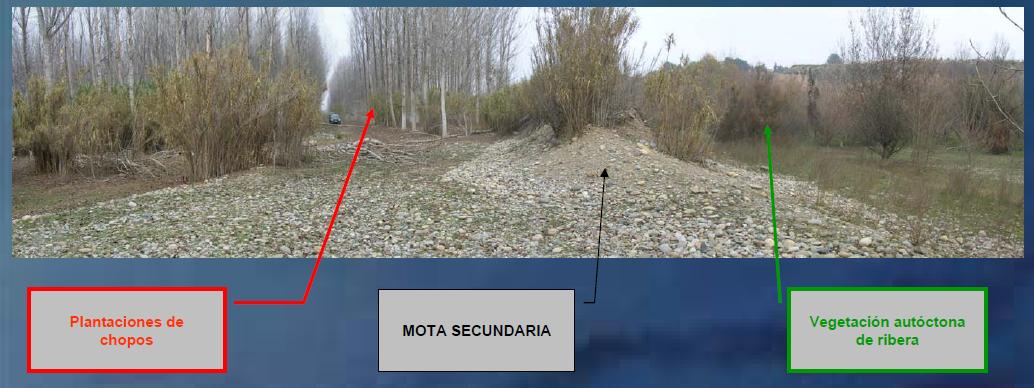Low reach of River Cinca
Low reach of River Cinca
Key features of the case study
The objective of the project is to restore the stream morphology and floodplain conditions in the right bank of the river Cinca, in the lower reach, between Velilla de Cinca and Fraga. There is a major actuation that consists of remove a levee that only protects crops.
Site description
The river Cinca is one of the largest rivers in the Ebro Basin that drains part of the North of Aragon, in Spain. The river has a lot of impacts in both riverbanks: crops, urban areas, reforested areas, levees, communication infrastructures...
There is a huge presence of sediments inside the stream that usually formed bars, more or less colonized by natural vegetation. The flow regime is regulated by upstream dams like "Mediano" o "El Grado" (436hm3 and 399hm3).
The presence of crops and cultivated areas has contributed to build defenses and to profit the fertile soils to plant black poplars.
Measures selection
There are two groups of measures: Morphological and about riparian vegetation.
MORPHOLOGICAL The main measure consists of increase the Fluvial Mobility Space through the remove of the levee that is closer to the river. There is other levee that protects the 500-year flood, but it will be preserved. This actuation will increase the lateral connectivity between the stream and the riparian vegetation.
RIPARIAN VEGETATION
Here are included 2 different tasks:
a)Natural riparian vegetation recovery through the cut down of black poplars plantation. There are going to plant native species: Salix, Corylus avellana, Fraxinus, Populus, Ulmus.
b)Reforest areas without vegetation.
Success criteria
Ecological response
Hydromorphological response
Hydrological regime
Unaffected
Monitoring before and after implementation of the project
During the execution phase, there will be different researches: Water Quality; Fishes and other communities; Sediments analysis.
During the actuation phase, there will be an environmental and technical control.
Before the finalization of the project, there will be another time, the researches in Water Quality; Fishes and other communities; Sediments analysis.
Socio-economic aspects
Contact person within the organization
Extra background information
References
http://oph.chebro.es/DOCUMENTACION/Restauracion/Restauracion.htm
Related Measures
- Link flood reduction with ecological restoration
- Widen water courses
- Allow/increase lateral channel migration or river mobility
- Set back embankments, levees or dikes
- Develop riparian forest
- Remove hard engineering structures that impede lateral connectivity
- Revegetate riparian zones
